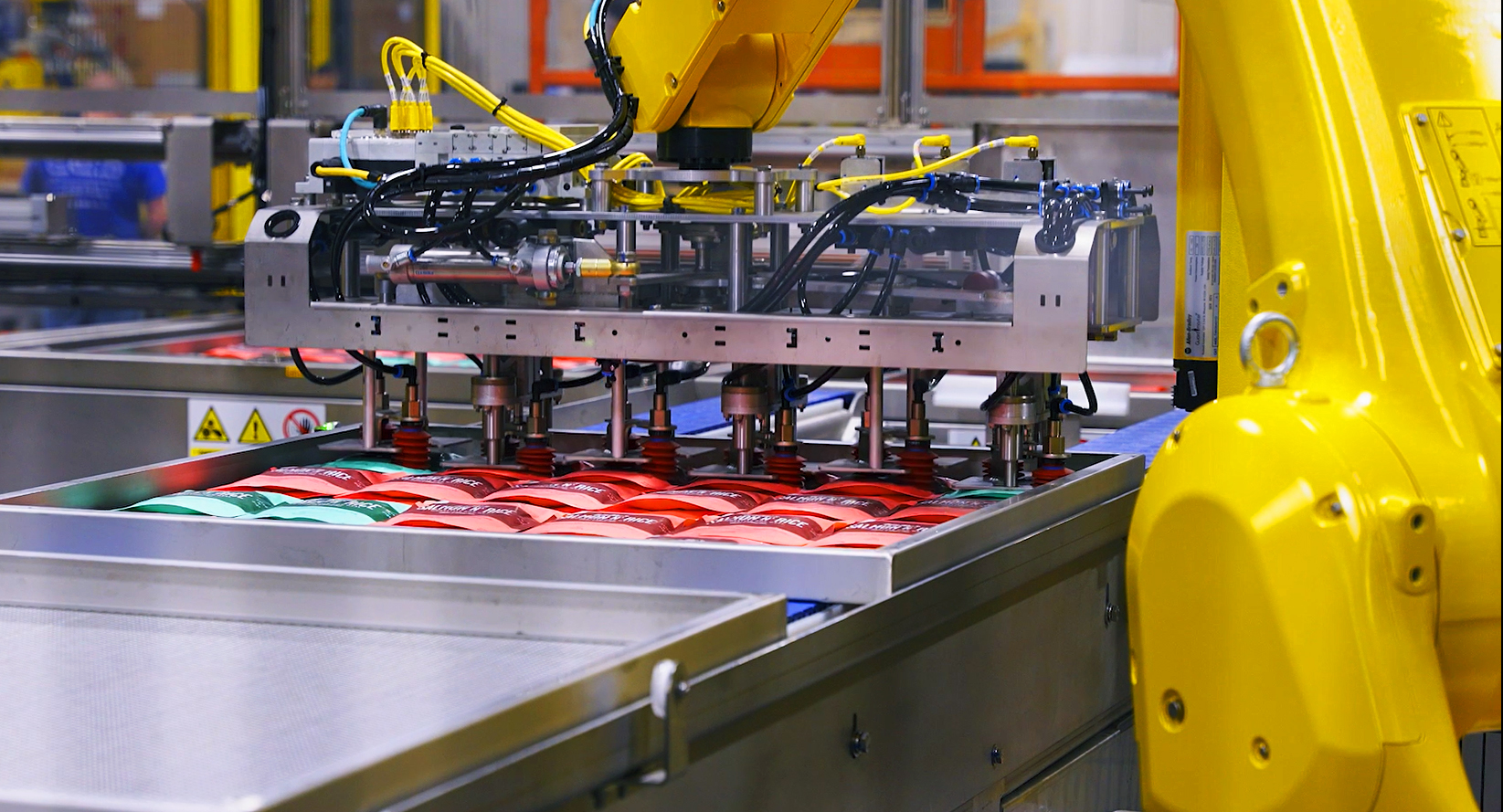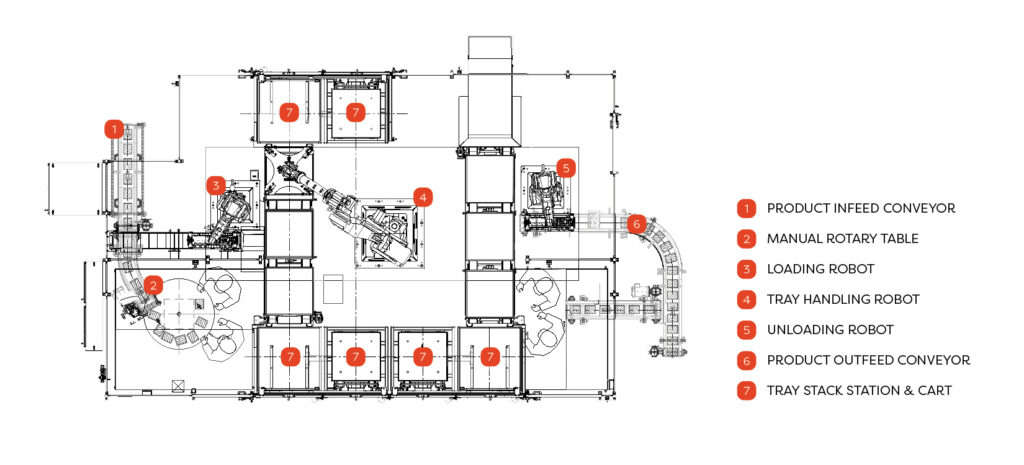The solution uses three robots to load unprocessed products for sterilization, unload sterilized products for downstream packing, and handle full and empty retort trays. Loading and unloading functions are carried out on opposing sides of the cell, with the third robot centered in the middle to simultaneously handle trays on each side, maintaining a compact footprint.
Six hydraulic tray carts are located around the cell, housing stacks of trays that automatically raise or lower to maintain consistent levels as they are placed or removed by the middle robot. Operators can access the carts from outside the cell for removal/replenishment without disrupting operation.
Robotic Loading & Unloading:
The tray handling robot picks an empty retort tray and places it onto the conveyor. It is transported to the loading robot, which picks unprocessed pouches from the product infeed and places them into the tray. The completed tray moves to a pickup area where the tray handling robot places it into one of the hydraulic stacker stations designated for full trays.
While the loading robot is operating, the tray handling robot picks a single tray filled with processed product onto the transport conveyor leading to the unloading robot. The unloading robot picks the pouches from the tray and places them on a takeaway conveyor to be hand packed downstream. Once the tray is unloaded, the tray handling robot picks it up, positions it above a cleanout slide, then tips and rotates the tray to ensure no products remain before placing the empty tray onto a stack cart.
Manual Loading & Unloading:
A hand pack station and manual unload station are positioned at each respective side of the cell. The station is available for small batch runs and can also service as backup to robotic errors. In manual mode, the loading and unloading robots are disabled for safety, although the tray handling robot continues placing and removing trays normally. Unprocessed products enter a rotary accumulation table, where two operators manually load trays and index them to the tray carts. On the unloading side, up to two operators transfer cooked pouches to the outfeed conveyor.








